Technology in Homecare
Smart Home Devices for Homecare: Enhancing Patient Safety and Comfort
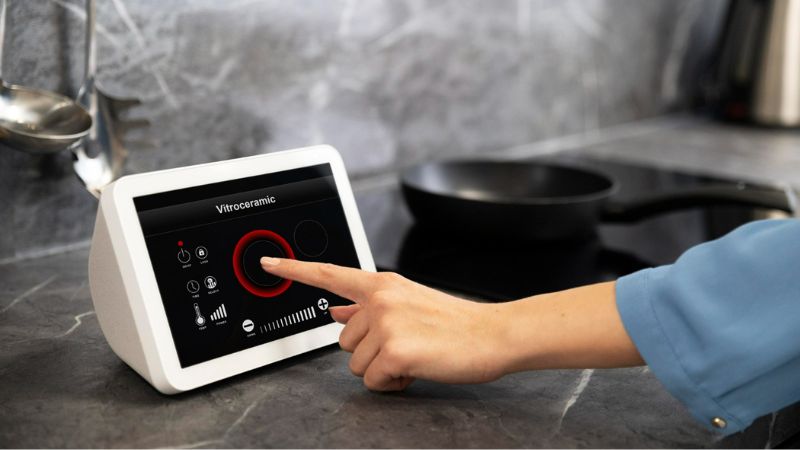
Imagine a world where the walls could talk, the lights could sense your mood, and your home could intuitively cater to the health and comfort needs of its inhabitants. This isn’t the script of a sci-fi movie; it’s the reality that smart home devices are creating for homecare patients today.
As healthcare shifts increasingly towards home-based settings, integrating smart technology is not just an option—it’s becoming a critical component in fostering safer, more comfortable living environments for patients. But what exactly are these devices, and how do they work to provide such benefits? Strap in as we explore the innovative world of smart home devices tailored for home care.
The Rise of Smart Home Technology in Homecare
Smart home technology, once a luxury, has become a vital tool in the management of homecare patients. Devices that automate basic home functions such as lighting, heating, and security are now being enhanced with healthcare functionalities to support the needs of patients with chronic illnesses, mobility issues, and other health constraints. The integration of IoT (Internet of Things) devices into homecare settings is designed to improve patient autonomy, monitor health conditions in real-time, and increase the overall quality of care.
Key Smart Home Devices That Enhance Homecare
Smart Thermostats and Environmental Controls: These devices maintain optimal room temperatures and air quality, crucial for patients with respiratory conditions or compromised immune systems. They can be controlled remotely and adjusted to suit individual comfort levels without requiring physical interaction from the patient.
Voice-Activated Systems: Devices like Amazon Echo and Google Home offer voice-activated assistance to control lights, lock doors, or call for help—vital for individuals with mobility issues or those who cannot operate traditional devices due to physical constraints.
Health Monitoring Devices: From smart blood pressure cuffs to advanced bed sensors that detect seizures, heart rate, and breathing abnormalities, these devices provide crucial data to healthcare providers and alert them to potential health issues before they become critical.
Security Cameras and Motion Sensors: Ensuring the safety of homecare patients, these devices can monitor movements, detect falls, and send alerts to caregivers or emergency services, providing peace of mind for both patients and their families.
Benefits of Smart Home Devices in Homecare
Enhanced Safety: The ability to monitor patients remotely allows for immediate response to emergencies like falls or sudden health changes. Smart alarms and security systems also protect against potential intruders, adding an extra layer of security.
Improved Comfort: By maintaining an ideal living environment through automated adjustments of lighting and temperature, patients can enjoy a more comfortable recovery and better overall well-being.
Increased Independence: Smart devices empower patients by allowing them to perform many daily tasks on their own, which is essential for their mental health and recovery. Independence in managing their environment can significantly improve their quality of life.
Better Communication with Caregivers: The integration of smart technologies facilitates smoother communication channels between patients and caregivers. Whether through real-time data sharing or simplified communication via voice-activated devices, these tools help keep everyone informed and engaged in the care process.
Challenges and Considerations
While the benefits are substantial, there are also challenges to consider, such as the need for continuous power supply, internet connectivity, and regular maintenance. Privacy and security concerns are paramount, as patient data is sensitive and must be protected from breaches.
The potential of smart home devices to transform home care is immense, ushering in a new era of automated patient care that prioritizes safety, comfort, and independence. As technology advances, healthcare providers and families must stay informed about new developments and consider how best to integrate these tools into their care strategies. Embracing smart home technology can dramatically improve the lives of homecare patients, offering not just medical support but a lifeline to a more dignified, independent living.
How Digital Health Tools Are Revolutionizing Patient Care at Home
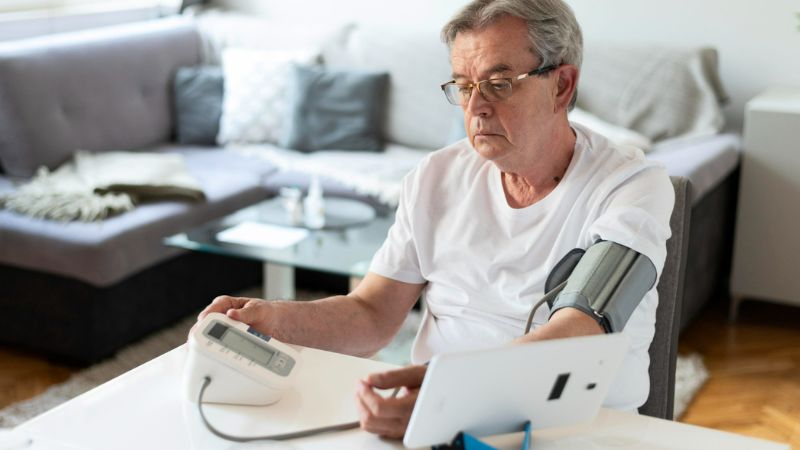
Imagine a world where your doctor is just a click away, your health is monitored 24/7 without stepping into a hospital, and personalized medical advice is delivered straight to your living room. This is not a scene from a sci-fi movie; it’s the reality of today’s healthcare, thanks to digital health tools. With the rise of telemedicine, wearable health devices, and AI-powered apps, patient care at home has transformed dramatically.
The Rise of Telemedicine
Telemedicine has taken center stage in home healthcare by allowing patients to consult with their doctors via video calls, messaging, or emails. This means you can receive medical advice, diagnoses, and even prescriptions without leaving your bed. Especially beneficial for those with mobility issues, chronic conditions, or those living in remote areas, telemedicine ensures continuous care delivery conveniently and cost-effectively.
Benefits of Telemedicine:
- Reduced Travel Time and Costs: Patients save on travel and related expenses, which is especially important for regular checkups.
- Immediate Access to Specialists: Telemedicine provides quicker access to specialists, which can be crucial for timely diagnosis and treatment.
- Minimized Risk of Infections: By avoiding hospital visits, patients reduce their risk of contracting nosocomial infections.
Wearable Health Devices
From fitness bands measuring your daily steps to advanced gadgets monitoring heart rate, blood pressure, and even blood sugar levels, wearable devices are a game-changer. These devices provide continuous health monitoring, which helps in early detection of potential health issues before they become severe. They are also instrumental in managing chronic conditions such as diabetes and hypertension by providing real-time data to both patients and physicians.
Advantages of Wearable Devices:
- Proactive Health Management: Continuous monitoring helps in managing lifestyle and medical conditions more effectively.
- Personalized Data Insights: Wearables provide valuable data that can be used to tailor health plans to individual needs.
- Enhanced Patient Engagement: Patients who actively monitor their health are more likely to engage in healthy behaviors and follow treatment plans.
AIPowered Health Apps
Artificial Intelligence (AI) in healthcare apps is making significant strides in personalized patient care. These apps can analyze vast amounts of data from various sources to offer tailored health advice, predict health trends, and even alert patients and doctors about potential health risks.
Contributions of AI in Healthcare:
- Predictive Analytics: AI can predict disease outbreaks, patient deterioration, and more, allowing for preemptive medical interventions.
- Customized Treatment Plans: Based on patient data, AI can help in crafting personalized treatment strategies that are more effective.
- Automation of Routine Tasks: AI automates administrative tasks like scheduling appointments, thus freeing healthcare professionals to focus more on patient care.
Challenges and Considerations
Despite the benefits, the integration of digital tools in home healthcare faces challenges such as data privacy concerns, the need for better internet connectivity in rural areas, and the digital divide that may leave some elderly patients behind. Ensuring cybersecurity, improving digital infrastructure, and providing training for all age groups are essential steps to address these challenges.
Digital health tools are revolutionizing the way we think about and receive medical care at home. They empower patients with the knowledge and tools needed for self-care and timely medical intervention, making healthcare more personalized and accessible. As we continue to embrace these technologies, the future of home healthcare looks promising, with a potential for even greater innovations and improvements in patient outcomes.
Embracing these digital health solutions not only enhances patient care but also builds a healthcare system that is more resilient, efficient, and inclusive. As technology continues to evolve, the integration of digital health tools in our daily lives will only deepen, ensuring that high-quality healthcare is just a touch away.
Top Mobile Apps for CDPAP Caregivers & Patients
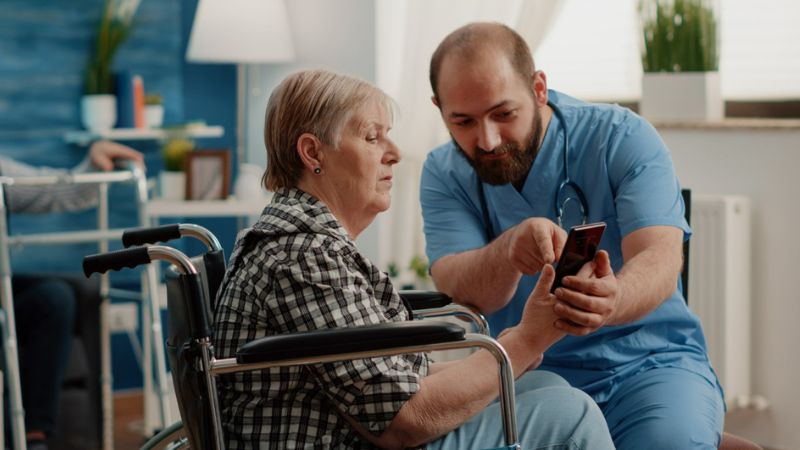
In the intricate dance of consumer-directed personal assistance programs (CDPAP), both caregivers and patients often find themselves managing a delicate balance of care, communication, and compliance. With the right tools, however, this balance can shift from overwhelming to manageable.
Mobile apps are increasingly becoming the linchpin in this transformation, offering innovative solutions that enhance the care experience while ensuring that medical guidelines and personal needs are met with precision and ease. Let’s dive into the digital toolbox and discover the best mobile apps that are changing the game for CDPAP caregivers and patients.
Essential Mobile Apps for CDPAP Caregivers and Patients
The right app can make all the difference in how caregivers and patients interact, manage daily health routines, and ensure compliance with healthcare policies. Here are some top picks that have proven invaluable:
CaringBridge
Purpose: Facilitates communication between patients, caregivers, and their broader social circle.
Features: Allows users to create private groups where they can share updates, manage visit schedules, and communicate needs effectively. This app is crucial for keeping everyone informed and emotionally connected.
Benefits: Reduces the often-overwhelming number of calls and texts, especially critical during intensive care periods.
CareZone
Purpose: Simplifies the management of health info, medications, and doctor’s appointments.
Features: Users can scan medication labels to automatically add them to a digital list, set reminders for doses, and log doctor’s appointments and other critical health notes.
Benefits: Ensures that medication and appointments are managed meticulously, which is particularly important for patients with complex care needs under CDPAP.
Lotsa Helping Hands
Purpose: Community coordination to support caregivers and patients by organizing help from family and friends.
Features: Includes a help calendar to organize meals, rides, and other support activities. It also allows for the creation of community updates and promotes engagement from within a support network.
Benefits: Alleviates caregiver burnout by distributing the load among a community, ensuring that the patient’s needs are met comprehensively.
Medisafe
Purpose: Medication management and reminder system.
Features: Provides medication reminders, and drug interaction warnings, and tracks prescription refill needs. It also includes a caregiver mode so that multiple users can synchronize medication schedules.
Benefits: Reduces the risk of medication nonadherence, a common issue in patient care, thereby improving overall treatment outcomes.
TimeTree
Purpose: Shared scheduling for caregivers and patients.
Features: Allows multiple users to view and edit a single calendar, keeping track of medical appointments, daily routines, and special events.
Benefits: Keeps everyone on the same page, which is crucial in a CDPAP setting where coordination and timely care are key.
Integrating Technology into CDPAP Care
While the adoption of these apps can greatly enhance the quality of care, successful integration depends on a few factors:
Training: Both caregivers and patients need basic training on how to use these apps effectively.
Customization: Apps should be tailored as much as possible to the specific needs of the patient and caregiver to ensure they provide relevant and necessary support.
Security and Privacy: It’s vital to ensure that any app used complies with healthcare privacy laws, particularly those concerning the protection of personal health information.
Embracing mobile technology through these apps can transform the caregiving experience under CDPAP, making it not just easier but also more effective. By enhancing communication, simplifying medication management, and improving logistical coordination, these tools empower caregivers and patients to focus more on care and less on the burdens of management.
Using Telemedicine to Improve Homecare: A Guide for CDPAP Participants

Picture this: you’re managing your health from the comfort of your home, with real-time access to your healthcare provider just a click away. This isn’t the future; it’s the present reality offered by telemedicine in the consumer-directed personal assistance program (CDPAP).
As healthcare continues to evolve, telemedicine emerges as a crucial tool, not just for convenience but as a fundamental part of enhancing patient care. This guide explores the pivotal role telemedicine plays in transforming home care for CDPAP participants, making it a cornerstone of modern healthcare strategies.
The Role of Telemedicine in Homecare
Telemedicine involves the use of telecommunications technology to provide clinical health care from a distance. It has been a game-changer in the medical field, especially in homecare settings where patients benefit from less frequent travel and increased access to specialists. For CDPAP participants, telemedicine not only streamlines the process of receiving care but also ensures that care is continuous, coordinated, and comprehensive.
Benefits of Telemedicine for CDPAP Participants
Improved Access to Care: Telemedicine allows patients to receive healthcare services remotely, eliminating the need for transportation to healthcare facilities. This is particularly beneficial for homecare patients with mobility challenges or those living in remote areas.
Enhanced Monitoring Capabilities: Continuous monitoring through digital tools can help detect potential health issues before they become serious, enabling prompt intervention. This aspect of telemedicine is vital for chronic disease management, which many CDPAP patients require.
CostEffectiveness: By reducing the necessity for physical clinic visits, telemedicine can lower healthcare costs significantly. It saves on transportation expenses and reduces the economic impact associated with lost work hours and other out-of-pocket expenses.
Increased Patient Engagement: With easier access to their health information and communication tools to discuss it, patients are more likely to be engaged in their care process. This heightened engagement can lead to better management of their conditions and overall health outcomes.
Implementing Telemedicine in CDPAP
To successfully integrate telemedicine into a CDPAP framework, several steps must be followed:
Infrastructure: Ensure there is a reliable internet connection and devices capable of supporting video conferencing and data sharing.
Training: Both caregivers and patients need to be educated on how to use telemedicine platforms. This includes understanding how to schedule appointments, enter information, and use equipment for remote monitoring.
Legal and Privacy Concerns: Compliance with health data protection laws, such as HIPAA in the United States, is essential. Both patients and caregivers should be informed about their data privacy rights.
Partner with Healthcare Providers: Establish partnerships with healthcare providers who are experienced in telemedicine. This ensures that patients receive expert care and that the telemedicine system is integrated smoothly with existing healthcare services.
Challenges and Considerations
While telemedicine offers numerous benefits, some challenges need to be addressed:
Technology Barriers: Not all patients are comfortable or familiar with using digital tools, which can hinder the effectiveness of telemedicine.
Quality of Care Concerns: Some aspects of physical examination cannot be replicated through telemedicine, which might impact the diagnosis and treatment of some conditions.
Dependency on Technology: A reliable technological infrastructure is crucial for telemedicine. Power outages or internet disruptions can impede access to care.
Telemedicine has the potential to revolutionize home care for CDPAP participants by providing more flexible, accessible, and efficient healthcare options. As we move forward, it will be crucial for caregivers, patients, and healthcare providers to embrace these digital tools and incorporate them into their care routines effectively. With proper implementation, telemedicine can ensure that all participants in the CDPAP program receive the best possible care tailored to their unique health needs.
Wearable Health Monitors: How They Can Benefit CDPAP Patients
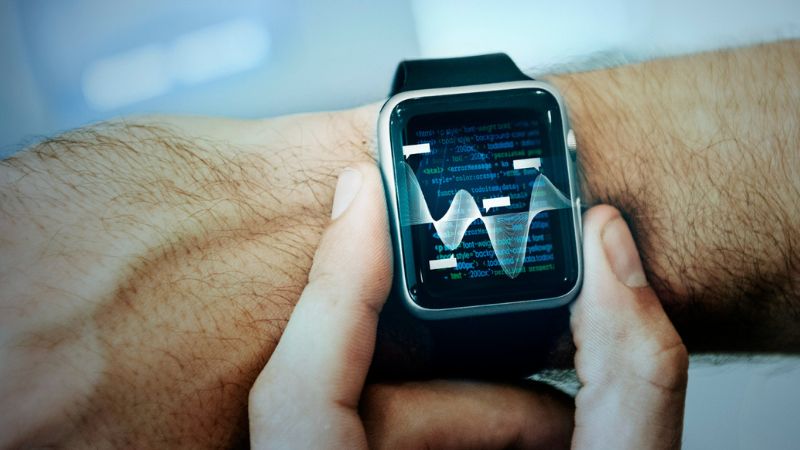
In a world where technology’s touch reaches every corner of our lives, it’s no surprise that healthcare is riding the wave of innovation with wearable health monitors. These devices are not just gadgets that count steps or track sleep patterns—they are sophisticated tools capable of transforming the care experience for CDPAP patients.
By offering real-time data and insights into one’s physiological functions, wearable health monitors can greatly enhance the management of chronic conditions and improve overall quality of life. Dive into how these technological wonders are reshaping homecare for patients in consumer-directed personal assistance programs.
The Advantages of Wearable Health Monitors for CDPAP Patients
Continuous Health Monitoring
Wearable devices provide continuous monitoring of vital signs such as heart rate, blood pressure, and oxygen saturation. This constant surveillance is crucial for CDPAP patients, particularly those with chronic conditions like heart disease, diabetes, or respiratory issues. By catching potential health issues before they escalate, these devices can prevent hospital visits and enable prompt intervention.
Empowered Self-Management
One of the key benefits of wearable technology is its ability to empower patients to manage their health. With access to real-time data on their physical condition, patients can make informed decisions about their daily activities and medication needs. This not only enhances their sense of independence but also improves their ability to actively participate in their care process.
Enhanced Communication with Healthcare Providers
Wearable health monitors can seamlessly transmit data to healthcare providers, allowing for better informed, data-driven decisions. This capability ensures that medical advice is based on comprehensive, up-to-date information, leading to more personalized care plans and optimized treatment outcomes.
Early Detection and Prevention
With advanced sensors, wearable devices can detect abnormalities in physiological signals that may indicate the onset of a health episode—such as a heart attack or a hypoglycemic event. Early detection is paramount in managing such conditions, significantly reducing the risk of complications.
Increased Convenience and Reduced Healthcare Costs
Wearable technology can also lead to cost savings for both patients and healthcare systems. By minimizing the need for frequent check-ups and reducing emergency room visits, these devices not only save money but also reduce the strain on healthcare resources. Furthermore, the convenience of having a ‘healthcare hub’ on your wrist or body is unparalleled, especially for patients with limited mobility or access to transportation.
Implementing Wearable Technology in CDPAP
To effectively integrate wearable health monitors into CDPAP care strategies, several steps are recommended:
Education and Training: Both caregivers and patients should receive training on how to use wearable devices effectively. This includes understanding how to interpret the data and when to act on it.
Choosing the Right Device: Not all wearables are created equal. It’s important to choose devices that are specifically suited to the health needs of the patient, considering factors like ease of use, battery life, and the specific health metrics they monitor.
Data Privacy and Security: Ensuring the confidentiality and security of health data collected by wearable devices is critical. Patients and caregivers should be educated about their rights and the measures taken to protect their information.
Wearable health monitors offer a promising future for enhancing healthcare delivery to CDPAP patients. By providing vital health information at their fingertips, these devices not only promote better health management but also bridge the gap between patients and healthcare providers, creating a more connected, efficient, and effective healthcare ecosystem.
Integrating Voice Assistants into Daily Care: Practical Tips
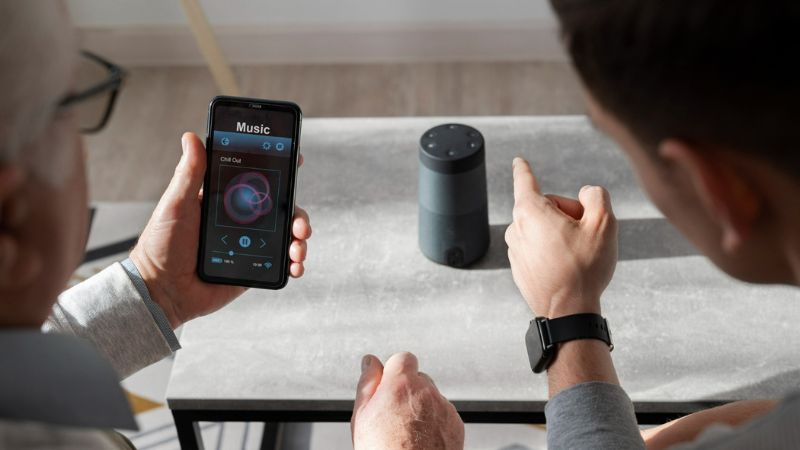
Imagine a world where your voice is the key to managing your health—a world where simple spoken commands can adjust your environment, remind you of medications, or even alert caregivers in an emergency.
This is not the realm of science fiction; it’s the practical reality offered by voice assistants in healthcare today. As technology continues to evolve, voice-activated devices are becoming indispensable tools in home healthcare, offering unprecedented convenience and support for patients and caregivers alike.
The Benefits of Voice Assistants in Daily Care
Voice assistants like Amazon Alexa, Google Assistant, and Apple Siri have moved beyond mere gadgets for playing music or checking the weather. In the healthcare context, they provide several notable advantages:
Enhanced Accessibility: For individuals with mobility issues or visual impairments, voice assistants offer a hands-free way to manage their living environment and health-related tasks.
Medication Management: Setting reminders for medication can be as simple as a voice command, ensuring that patients maintain their treatment schedule without fail.
Emergency Assistance: Voice assistants can be programmed to contact emergency services or caregivers with simple voice commands, providing a critical safety net for patients living alone.
Daily Routine Simplification: From controlling lights and thermostats to accessing entertainment and making phone calls, these devices help streamline daily activities, making them less of a chore and more of a relief.
Practical Tips for Integrating Voice Assistants into Daily Care
Choose the Right Device
Select a voice assistant that best fits the patient’s specific needs. Consider factors like the ease of use, compatibility with other smart home devices, and the types of tasks it can perform. For example, Google Assistant is known for its robust search capabilities, while Amazon Alexa offers a wide range of “skills” related to health management.
Prioritize Privacy and Security
When integrating technology that will handle sensitive health data, prioritize devices and setups that offer robust security measures. Use features like voice recognition to limit access to the device and encrypt any data shared between the voice assistant and other devices.
Customize for Individual Needs
Customize the voice assistant’s setup to align with the patient’s daily routine and specific health requirements. For instance, program the device to provide weather updates for planning daily activities or integrate it with a calendar to remind the patient of upcoming doctor’s appointments.
Train Users and Caregivers
Ensure that both caregivers and patients are adequately trained on how to use the voice assistant. Include basic commands, troubleshooting, and updates on newly added features. Regularly review the functionalities to ensure the voice assistant remains a helpful tool rather than a source of frustration.
Monitor and Update Regularly
Technology evolves rapidly; regularly updating device software ensures that it operates efficiently and remains secure. Additionally, keeping up with new features or apps can significantly enhance the device’s utility in daily healthcare management.
Voice assistants are revolutionizing home healthcare, providing patients with tools that promote independence while ensuring they remain connected to the care they need. By following these practical tips, caregivers can effectively integrate these devices into daily care routines, improving the quality of care and enhancing the lives of those they support.
Navigating Online Health Records: A Security Guide for CDPAP Families

In today’s digital age, managing health records online has become a necessity rather than a choice, especially for families enrolled in CDPAP. This program allows patients to direct their care, giving them the freedom to hire family members or friends as caregivers.
While this personalized approach to healthcare is empowering, it also comes with the added responsibility of managing sensitive medical information securely online. The transition to digital health records offers immense convenience but equally raises significant security concerns. Here’s an essential guide to help CDPAP families navigate the complexities of online health records while ensuring the utmost security and privacy.
Understanding the Importance of Secure Health Information
Health records contain highly sensitive personal information, from medical history and treatments to insurance details and personal identifiers. For CDPAP families, where caregivers are often relatives, the overlap between personal and professional information increases the risk of accidental disclosures and security breaches. Ensuring the security of these records is not just a matter of regulatory compliance, but of safeguarding personal and family well-being.
Key Risks to Online Health Records
Unauthorized Access: The most common risk to online health records is unauthorized access through hacking, phishing, or simply by exploiting weak passwords.
Data Breaches: Even large healthcare organizations are vulnerable to data breaches, which can expose sensitive patient information.
Insider Threats: Sometimes, the threat comes from within an organization—a disgruntled employee or a careless mistake can lead to substantial data leaks.
Strategies for Protecting Health Information
To mitigate these risks, CDPAP families can employ several robust security measures:
Create Strong, Unique Passwords
It’s crucial to use strong, unique passwords for each medical portal. Consider using a password manager to keep track of these credentials securely.
Utilize Two-Factor Authentication (2FA)
Enable 2FA on all healthcare-related online accounts to add an extra layer of security. This often involves receiving a code on your phone that you must enter in addition to your password when logging in.
Regular Monitoring and Audits
Regularly check access logs if available, and review your health records for any unauthorized changes or access. This is particularly important in a program like CDPAP, where multiple individuals might have legitimate access to one patient’s records.
Educate Family Members
Since CDPAP involves family caregivers, educating everyone about the basics of cyber hygiene—recognizing phishing attacks, securing personal devices, and using secure networks—is essential.
Secure Personal Devices
Ensure that all devices used to access health records are secured with passwords, encryption, and up-to-date antivirus software. This includes personal smartphones, tablets, and computers.
Legal Considerations and Compliance
Understand the legal protections in place for health information, such as those provided by HIPAA (Health Insurance Portability and Accountability Act) in the U.S., which mandates the protection and confidential handling of protected health information (PHI). Being aware of these laws can help you better understand your rights and the obligations of those who manage your health data.
Utilizing Health Information Exchanges (HIEs) Securely
Many healthcare providers use HIEs to allow for easier access to and secure sharing of health information across different healthcare systems. If your healthcare provider participates in an HIE, ensure that they comply with the appropriate security standards to protect your data from unauthorized access.
Navigating online health records securely requires constant vigilance and a proactive approach to security, especially for CDPAP families managing their care independently. By implementing strong security practices, educating all family members involved, and staying informed about legal standards, you can protect your sensitive medical information effectively. In the digital realm, your health records’ safety ensures not just your privacy but also your health’s integrity. Stay secure, and take control of your digital healthcare journey confidently.
The Future of Homecare: Emerging Technologies to Watch
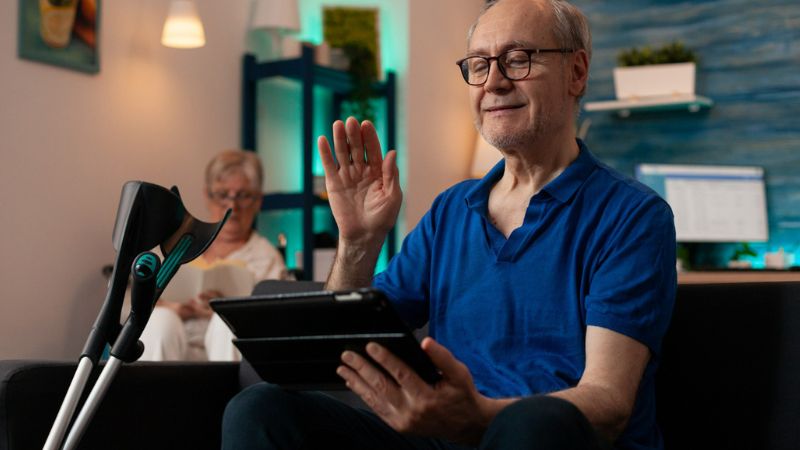
Imagine a world where chronic disease management happens in the comfort of your living room, where post-operative care and routine check-ups occur without ever leaving your bed, and where your living environment adapts to your health needs seamlessly. This future is not as far off as it might seem.
With advances in technology, homecare is set to undergo a transformative shift, promising to make healthcare more accessible, personalized, and efficient. In this blog, we explore the emerging technologies set to revolutionize the way we manage health at home, ensuring care is continuous, comprehensive, and centered around patients.
Telehealth: Bringing the Consultation Room to Your Living Room
Telehealth has surged in popularity, driven by advancements in video conferencing tools and broader acceptance of remote healthcare services. This technology allows patients to consult with physicians and specialists via digital platforms, reducing the need for physical travel and enabling quick access to medical advice. The integration of AI with telehealth is poised to further enhance diagnostic accuracy and personalize treatment plans based on real-time data analysis.
Smart Home Devices: The Cornerstones of Intelligent Healthcare
Smart home technology is revolutionizing home care by turning ordinary homes into smart health-promoting environments. Devices like smart thermostats can adjust conditions based on health requirements, and smart refrigerators can track nutrition and suggest meal plans. More sophisticated tools, including AI-powered health monitors, continuously assess health metrics such as heart rate, blood pressure, and blood sugar levels, alerting healthcare providers to potential health issues before they become acute crises.
Wearable Health Technology: On-Body Health Monitoring
Wearable devices have expanded beyond fitness trackers to become crucial health monitoring tools. These devices provide continuous data on vital signs, detecting deviations from the norm and enabling proactive management of conditions like diabetes and heart disease. Future wearables will likely include nanotechnology that can detect health markers at a molecular level, offering even earlier warnings of potential health changes.
Robotics: Hands-On Care Without the Hands
Robotic technology in-home care is advancing rapidly, offering physical assistance to those with mobility issues and performing tasks that would typically require human caregivers. From robotic exoskeletons assisting with ambulation to automated systems for medication dispensing, these technologies help maintain independence for aging populations and those with physical disabilities.
Augmented Reality (AR) and Virtual Reality (VR): A New Dimension in Therapy
AR and VR are set to transform therapeutic practices within home care. By simulating real-world environments, these technologies can help in physical rehabilitation and mental health management, providing immersive therapies that encourage engagement and improve treatment efficacy. For example, VR can simulate walking exercises for someone recovering from knee surgery, providing both motivation and measurement.
Data Integration and Predictive Analytics: Anticipating Care Needs
The power of big data cannot be underestimated in the future of home care. By integrating data from multiple sources—wearable devices, smart home systems, and electronic health records—predictive analytics can forecast potential health events, allowing for preemptive care interventions. This holistic view not only ensures a comprehensive care plan but also personalizes it to the individual’s changing health status.
As we look to the future, the landscape of homecare is evolving from reactive to proactive, with technology at its heart. The emerging technologies outlined above are just the tip of the iceberg. As they develop, they promise to make home care more effective, less invasive, and more responsive to the needs of patients across the globe.
The integration of such innovations into everyday life will undoubtedly redefine the boundaries of healthcare, making advanced care accessible right from the comfort of our homes. The future of home care is bright, and it is smart. Let’s embrace these technologies with open arms and minds, ready to take control of our health in ways we never thought possible.
Virtual Reality Therapy: Benefits for Chronic Pain and Rehabilitation

Imagine escaping the confines of chronic pain and physical limitations through the gateway of cutting-edge technology. Virtual Reality (VR) Therapy is no longer just a futuristic concept; it’s a present-day treatment modality transforming lives by transporting patients to a world where pain is manageable and rehabilitation is more effective. This immersive technology is making significant strides in healthcare, providing relief and recovery options that were unthinkable just a decade ago.
The Science Behind VR Therapy
VR therapy involves using virtual reality technology to create simulated environments for therapeutic purposes. It’s based on the principle of distraction therapy and controlled sensory experiences to manage pain perception, improve motor functions, and promote cognitive recovery. By engaging multiple senses in a controlled, immersive virtual world, VR can manipulate how the brain perceives and processes pain and physical limitations.
Pain Management Revolutionized
Chronic pain affects an estimated 20% of people worldwide, impacting the quality of life and mental health. Traditional pain management techniques often involve medications, which can have side effects and lead to dependency. VR therapy offers a novel and safe alternative. Here’s how:
Multisensory Pain Modulation
VR diverts a patient’s attention from the sensation of pain to virtual stimuli, reducing the brain’s capacity to process pain signals. This multisensory distraction is not merely a psychological trick; it involves activating specific neural pathways that influence pain perception, providing substantial pain relief without the need for drugs.
Customizable Environments
Patients can be “transported” to serene landscapes, peaceful settings, or engaging scenarios that help them manage pain through relaxation and mindfulness exercises. Each environment can be tailored to the patient’s preferences, enhancing the effectiveness of the therapy.
Enhancing Rehabilitation Outcomes
Rehabilitation through VR therapy is not just about making therapy sessions more enjoyable; it’s about making them more effective. VR can be used to treat a variety of conditions, from stroke recovery to spinal cord injuries. Here’s how VR helps:
Improved Motor Skills
For patients recovering from strokes or injuries, VR therapy facilitates motor learning and neuroplasticity—the brain’s ability to reorganize itself by forming new neural connections. Patients perform virtual tasks that promote physical movement and motor control, which are crucial for recovery.
Real-Time Feedback and Motivation
VR systems provide immediate feedback through visual or sensory cues, which helps patients understand their progress in real-time. This feedback is essential for motivating patients to continue their therapy and achieve better outcomes.
Safety and Control
One of the biggest advantages of VR in rehabilitation is the ability to create controlled environments that are safe for patients who may be at risk of injury from physical exertion. Patients can perform rehabilitative exercises without the physical risks associated with real-world activities.
The Future of VR in Healthcare
As VR technology advances, its applications in healthcare are expanding. Future developments include more personalized VR scenarios, integration with other technologies like AI and wearable devices, and broader accessibility to patients at home. Researchers are continuously exploring new ways in which this technology can be utilized to enhance patient care.
Virtual Reality Therapy is a beacon of hope for those battling chronic pain and navigating the challenges of rehabilitation. By leveraging the power of VR, patients can experience significant improvements in pain management and physical recovery.
The potential of VR in transforming healthcare is immense, promising a future where therapy is not only about healing but also about empowering patients to lead fuller, more active lives. As we continue to embrace and integrate this technology, we can look forward to a new era in medical treatment where recovery is a journey through a virtual world, tailored specifically to heal.
Technology Training for CDPAP Caregivers: Enhancing Skills for Better Care

In an age where technology permeates every aspect of our lives, the field of home healthcare is no exception. Caregivers under CDPAP are finding that embracing technology not only streamlines their duties but significantly improves the quality of care they provide. From digital health records to telemedicine, technology offers tools that can transform their role.
The Importance of Technology in Home Healthcare
Technology in home healthcare enhances communication improves accuracy in health monitoring, and offers essential tools for emergency preparedness. For caregivers, particularly those involved in programs like CDPAP, where patients direct their care, being technologically savvy is no longer optional but a critical component of effective care delivery.
Streamlining Communication
Effective communication channels between caregivers, patients, and healthcare providers are crucial. Digital tools such as secure messaging apps and patient care management software can facilitate seamless communication, ensuring that everyone involved is up-to-date with the patient’s health status and care plans.
Accurate Health Monitoring
Technology enables more precise monitoring of a patient’s vital signs and medical conditions through devices connected to mobile apps or health platforms. This allows for real-time data collection and sharing with healthcare professionals, which is vital for patients with chronic conditions or those in recovery.
Emergency Preparedness
In an emergency, the right technology can save lives. Caregivers trained in using emergency response systems and electronic health records can quickly access critical information and communicate effectively with emergency services, providing them with immediate, potentially life-saving data.
Training Needs for CDPAP Caregivers
To harness these technological benefits, CDPAP caregivers need comprehensive training that covers various aspects of digital health technology.
Basic Digital Literacy
The foundation of any technology training program for caregivers should begin with basic digital literacy. This includes understanding how to operate common devices such as smartphones, tablets, and computers, as well as navigating the internet safely and effectively.
Health Information Systems
Training caregivers to use electronic health records (EHRs) and data entry protocols is crucial. This includes how to document care accurately, understand patient charts, and ensure privacy and security compliance according to HIPAA regulations.
Telemedicine Platforms
As virtual visits become more common, caregivers need to be proficient in setting up and facilitating telehealth sessions between patients and doctors. This includes managing the technical aspects of video calls and ensuring that both the caregiver and the patient know how to use the necessary equipment and software.
Implementing a Technology Training Program
Developing a technology training program for CDPAP caregivers involves several steps, from curriculum development to training delivery and evaluation.
Curriculum Development
The training curriculum should be comprehensive, covering all necessary technologies that caregivers are expected to use. It should also be adaptable to accommodate the varying skill levels of caregivers, from novices to those more experienced with technology.
Training Delivery
Training can be delivered through a combination of online and in-person sessions. Online modules allow caregivers to learn at their own pace, while in-person training provides the hands-on experience needed to master complex tools and equipment.
Continuous Learning and Support
Technology evolves rapidly, and ongoing training and support are crucial to ensure caregivers can continue to use technology effectively. Regular updates and refresher courses can help caregivers stay current with new tools and regulations in healthcare technology.
Investing in technology training for CDPAP caregivers is essential for the evolution of home healthcare. By equipping caregivers with the necessary technological skills, we can enhance the overall quality of care provided to patients. Technology empowers caregivers, supports patients, and ensures a higher standard of care, making it a win-win for all parties involved in the caregiving process. As we move forward, embracing technology in caregiver training will not just be an option; it will be imperative for providing compassionate, competent, and effective care.
How Technology Can Facilitate Better Communication Between CDPAP Care Teams

In the intricate world of home healthcare, communication is the cornerstone that ensures seamless care delivery and enhances patient outcomes. For those participating in CDPAP, effective coordination among care teams can often be the difference between adequate care and exceptional service.
Fortunately, technology offers robust solutions that can bridge communication gaps, streamline processes, and elevate the overall efficiency of care teams.
The Vital Role of Communication in CDPAP
Under the CDPAP, patients or their designated representatives have the authority to manage their care by hiring, training, and supervising their caregivers. This unique model places a premium on clear, consistent communication to manage various aspects of care effectively. From scheduling to medical management and emergency response, every facet of the patient’s care depends on the flawless exchange of information.
Enhancing Team Collaboration
Effective communication ensures that all team members are on the same page, reducing the risk of errors and enhancing care quality. Here’s how technology steps in to help:
Real-Time Communication Tools
Apps and platforms that allow instant messaging and information sharing are crucial for CDPAP teams. Tools like Slack or Microsoft Teams enable care teams to send and receive updates about patient care in real-time, ask quick questions, and share important health updates instantly.
Unified Communication Systems
Integrated communication systems that combine voice, video, and text communication can significantly enhance interaction among caregivers, patients, and healthcare providers. These systems ensure that critical information is relayed promptly and accurately, facilitating better decision-making and coordination.
Mobile Health Applications
Mobile apps specifically designed for healthcare settings can provide platforms for documenting care activities, sharing status updates, and managing shifts and scheduling. This not only keeps the care team aligned but also ensures that all caregivers are informed about the patient’s current needs and condition.
Streamlining Data Management
Accurate and timely data management is crucial for effective care coordination. Technology provides solutions to streamline this aspect, enhancing communication through better data handling.
Electronic Health Records (EHR)
EHRs allow for the digital storage of patient information, which any authorized caregiver can access at any time. This continuity of information eliminates the need to share the same details repeatedly and ensures that every caregiver has the latest information regarding the patient’s health status.
Cloud-based Platforms
Cloud storage solutions offer a secure way to store and share important health documents and care logs. These platforms can be accessed from any device, ensuring that caregivers have access to necessary information whenever needed, thus facilitating smooth transitions between different caregivers.
Facilitating Training and Education
Continuous education is vital in healthcare, and technology can significantly provide ongoing training for CDPAP caregivers.
Online Training Modules
Web-based seminars and training modules allow caregivers to stay updated on the latest care techniques and regulatory compliance issues. This ensures all team members are equally informed and skilled, promoting uniformity in care delivery.
Virtual Reality (VR) and Augmented Reality (AR)
These technologies can simulate real-life scenarios for caregiver training, enhancing understanding and preparedness for various care situations without the risk.
Technology is not just an adjunct tool but a central pillar in enhancing communication within CDPAP care teams. By embracing innovative communication tools, data management systems, and training technologies, CDPAP caregivers can ensure more coordinated, consistent, and high-quality care.
As technology continues to evolve, its integration into daily care practices promises to bolster the efficacy of home healthcare services, making it an indispensable asset in the management of patient care. Let’s harness the power of technology to transform CDPAP care, making every communication count toward better patient outcomes.
Exploring the Benefits of Artificial Intelligence in Homecare
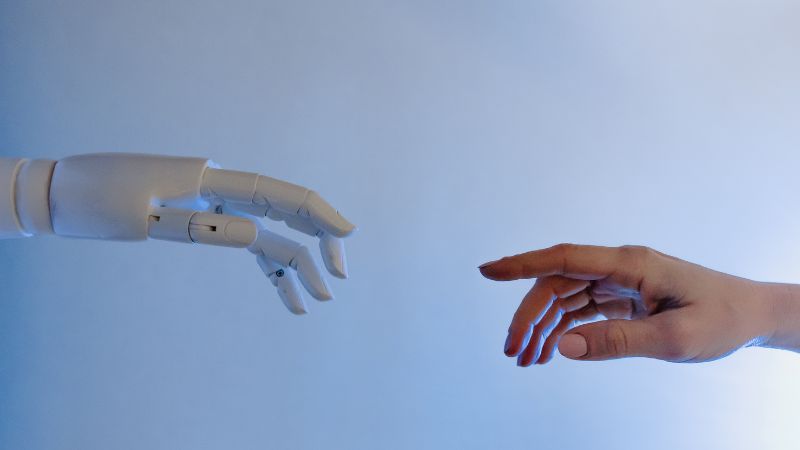
As we sail through the 21st century, the fusion of artificial intelligence (AI) with healthcare is not just an innovation—it’s a revolution. The realm of homecare, once reliant solely on human touch and intuition, is now experiencing a transformative shift with the integration of AI technologies.
This leap forward promises to make home-based care not only more efficient but also more effective, offering unprecedented support to caregivers and enhanced quality of life for patients.
Personalized Care Plans
AI excels in gathering and analyzing vast amounts of data—a capability that is put to excellent use in developing personalized care plans. Through the analysis of patient records, real-time health data, and even genetic information, AI algorithms can tailor treatment and care routines that are uniquely suited to the individual needs of each patient. This personalized approach not only improves the efficacy of care but also enhances patient engagement and satisfaction.
Predictive Health Analytics
One of the most powerful applications of AI in-home care is in predictive health analytics. AI systems can monitor and analyze minute changes in a patient’s health data collected via sensors and wearable technology. By identifying trends and predicting potential health risks, these systems can prompt preemptive medical interventions, potentially preventing hospital readmissions and more severe health episodes.
Virtual Health Assistants
AI-powered virtual assistants can perform a variety of functions that simplify the complexities of home care for patients and caregivers alike. From reminding patients to take their medication to provide instructions for home-based therapies, these assistants ensure that care continues seamlessly between professional visits. They can answer questions, provide companionship via natural language processing, and help manage daily tasks—all of which contribute to a higher standard of living for patients.
Enhanced Monitoring and Response Systems
With AI, continuous monitoring of patient’s health becomes less intrusive yet more effective. Sophisticated algorithms analyze data from connected devices to detect abnormalities that may indicate emergencies, such as falls or critical changes in vital signs. Upon detecting such events, AI systems can automatically alert caregivers or emergency services, significantly decreasing response times and potentially saving lives.
Automation of Routine Tasks
AI can automate numerous routine tasks, reducing the burden on caregivers and allowing them to focus more on the patient’s physical and emotional needs. Automated scheduling, patient monitoring, and management of health records are just a few examples where AI can enhance operational efficiency in homecare settings.
Overcoming Isolation
For many, particularly the elderly, homecare can be isolating. AI-driven technologies such as social robots and interactive apps can provide social stimulation and emotional support, helping to combat feelings of loneliness and depression. These technologies can engage patients in meaningful activities, keep them connected with loved ones, and improve their overall mental health and well-being.
Ethical Considerations and Future Prospects
While AI promises many benefits, its integration into home care raises ethical questions, particularly concerning privacy, data security, and the potential reduction of human contact in caregiving. Addressing these concerns is crucial as we continue to develop and deploy AI technologies in sensitive environments like home care.
The potential of artificial intelligence to revolutionize home care is immense. By providing personalized care plans, enhancing monitoring and response systems, and automating routine tasks, AI not only boosts the efficiency of care but also significantly improves its quality.
As we look to the future, the role of AI in-home care is set to grow, promising to further enhance the independence and well-being of patients living at home. Embracing this technology, while carefully considering the ethical implications, will be key to realizing the full potential of AI in transforming homecare into a more responsive, effective, and compassionate service.
The Role of IoT in Enhancing Homecare Services
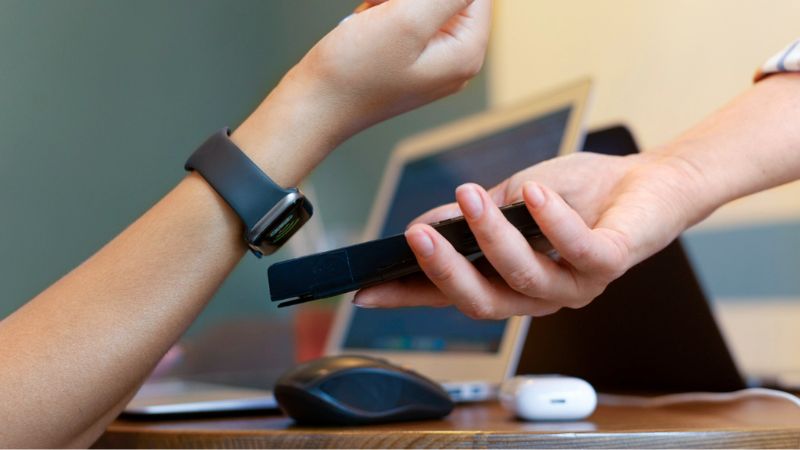
Welcome to a day in your life where home isn’t just where the heart is—it’s where your health is closely watched and cared for. Think this: sensors that notice if you slip in the shower and instantly call for help or a fridge that nudges you when it’s time for your medication. This isn’t a glimpse into a distant, high-tech future; it’s today’s reality, made possible by the Internet of Things (IoT).
Across the globe, IoT is revolutionizing homes, turning everyday environments into dynamic spaces equipped to provide medical support just as effectively as any clinic. Let’s explore how this smart technology is weaving into our daily lives to keep us safe, healthy, and cared for at home.
Understanding IoT and Its Impact on Homecare
The Internet of Things, or IoT, refers to the network of physical devices, vehicles, home appliances, and other items embedded with sensors, software, and connectivity which enables these objects to connect and exchange data. In the realm of home healthcare, IoT devices can include wearable health monitors, emergency response systems, and even smart home devices that contribute to medical care.
Key Benefits of IoT in Homecare:
- Continuous Monitoring: Devices like medical alert systems and wearable health trackers can monitor vital signs, predict emergencies, and even suggest preventive measures.
- Improved Accuracy in Care: Automated systems reduce human error and provide accurate, real-time data that help in precise diagnosis and treatment.
- Enhanced Patient Comfort: Patients receive high-quality care in the familiar surroundings of their homes, reducing hospital stays and enhancing comfort.
IoT Applications in Homecare
IoT technology in-home care is not just about convenience; it’s about creating a safer and more efficient environment for those needing assistance. Here’s how IoT is making a difference:
Smart Health Monitoring Devices
Wearable devices such as smartwatches that monitor heart rates and smart scales that track weight fluctuations are commonplace in many homes now. These devices provide constant health data that can be analyzed for any significant changes, alerting healthcare providers to potential health issues before they become severe.
Enhanced Medication Management
Smart medication dispensers are programmed to alert patients when it’s time to take their medication, reducing the risk of missed doses or accidental overdoses. These devices can be particularly helpful for the elderly or those with complex medication schedules, ensuring adherence to prescribed health regimens.
Emergency Response Systems
IoT devices can also enhance the safety of home care patients by providing advanced emergency response systems. Sensors can detect falls, and other emergencies, and automatically alert caregivers and emergency services, providing a rapid response when it matters most.
Remote Patient Monitoring (RPM)
Remote patient monitoring systems use IoT devices to transmit patient data to healthcare providers in real-time. This allows for continuous monitoring of patients with chronic diseases or posthospitalization, ensuring that any deviation from the norm can be addressed immediately.
Overcoming Challenges
While IoT in homecare offers many benefits, some challenges need to be addressed to ensure its effectiveness and safety:
Privacy and Security: The increase in data transmission and storage raises concerns about data privacy and security. It’s vital to implement stringent cybersecurity measures to protect sensitive health information.
Integration Issues: Ensuring that different IoT devices and systems work together seamlessly can be challenging. Standardization among devices needs to be improved for better interoperability.
Cost and Accessibility: The cost of IoT devices and the need for robust internet connectivity can be prohibitive for some patients, particularly in rural or underprivileged areas.
The integration of IoT in homecare services is not just improving medical care; it is revolutionizing it. By enabling more accurate monitoring, personalized care, and immediate emergency responses, IoT empowers patients to take control of their health and live more independently. As technology advances, the potential for IoT in home healthcare will expand, promising a future where everyone can enjoy safer, more efficient, and responsive care at home.
Embracing IoT means taking a significant step toward a future where healthcare is more personalized, accessible, and integrated into our daily lives. As we continue to navigate these advancements, the role of IoT in-home care will only grow, making it an essential element of modern healthcare strategies.
From Monitors to Management: Technology’s Role in Elderly Care

As our loved ones age, ensuring their safety and well-being becomes a top priority. Fortunately, advancements in technology are transforming elderly care, offering new ways to enhance their quality of life, maintain their independence, and provide peace of mind for their families. From wearable devices that monitor health metrics to smart home systems that ensure safety and comfort, technology is playing a crucial role in caring for the elderly.
Telehealth: Bringing Care Home
Telehealth has revolutionized healthcare for the elderly by allowing them to receive medical attention from the comfort of their own home. Through video calls and remote monitoring, seniors can consult with their doctors, manage chronic conditions, and receive timely medical advice without the need for frequent hospital visits.
Benefits of Telehealth for Elderly Care:
- Reduced Travel Stress: Eliminates the need for regular trips to the doctor, which can be physically taxing for the elderly.
- Immediate Medical Attention: Quick virtual visits and constant monitoring ensure that any potential health issues are addressed promptly.
- Continuous Care: Regular telehealth sessions provide consistent care that adapts to the evolving health needs of elderly patients.
Wearable Health Devices
Wearable technology like fitness trackers, smartwatches, and specialized sensors can monitor vital signs such as heart rate, and blood pressure, and even detect falls. These devices not only track health data but also alert caregivers and medical professionals if something goes awry, ensuring immediate response to emergencies.
How Wearables Enhance Elderly Care:
- Fall Detection and Alerts: Immediate alerts to caregivers when a fall is detected, potentially saving lives and mitigating serious injuries.
- Health Monitoring: Continuous monitoring of vital signs helps in managing chronic diseases and preventing complications.
- Independence for Seniors: Gives seniors the freedom to live independently, knowing that help is just a moment away if needed.
Smart Home Technologies
Smart home technologies are ensuring that homes are safe, secure, and tailored to the needs of the elderly. Automated lighting, voice-activated devices, and smart security systems help create an environment that supports the elderly to live independently while being closely monitored.
Advantages of Smart Home Tech in Elderly Care:
- Enhanced Safety: Automated systems like smart locks and alarms provide security against potential risks.
- Environment Control: Devices such as smart thermostats and automated curtains adjust the living environment to comfortable settings.
- Ease of Use: Voice-activated gadgets allow the elderly to control appliances, lights, and heating without physical strain.
Mobile Health Apps and Software
Health apps on smartphones and tablets can empower seniors to take an active role in their health management. These apps can remind them to take medication, track their exercise routine, and even provide dietary suggestions.
Features of Mobile Health Apps:
- Medication Reminders: Help seniors adhere to their medication schedule accurately and consistently.
- Activity Tracking: Encourage a healthy lifestyle by keeping track of physical activity and sleep patterns.
- Dietary Management: Offer guidance on nutritional intake to help manage health conditions like diabetes or hypertension.
Overcoming Challenges
Despite the benefits, integrating technology into elderly care presents challenges including usability for those unfamiliar with digital tools, privacy concerns, and the need for ongoing support and maintenance. Addressing these issues involves:
- UserFriendly Design: Creating intuitive, easy-to-use interfaces that cater to the elderly.
- Robust Security Measures: Ensuring all devices and apps adhere to high standards of data protection.
- Support and Education: Providing continuous support and education to help the elderly and their caregivers make the most of these technologies.
Technology is significantly enhancing the way we care for the elderly, making it possible to monitor health closely, manage chronic conditions more effectively, and maintain independence longer. From telehealth to wearable devices and smart home solutions, the range of tools available is creating a safer, more comfortable, and more connected living environment for seniors.
Embracing these technologies in elderly care not only improves the quality of life for our aging population but also supports caregivers in providing the best possible care. As these innovations continue to evolve, they promise to further empower seniors and their families, ensuring that aging can be a journey taken with dignity and grace.
How Smart Sensors Are Improving Safety for Homecare Patients
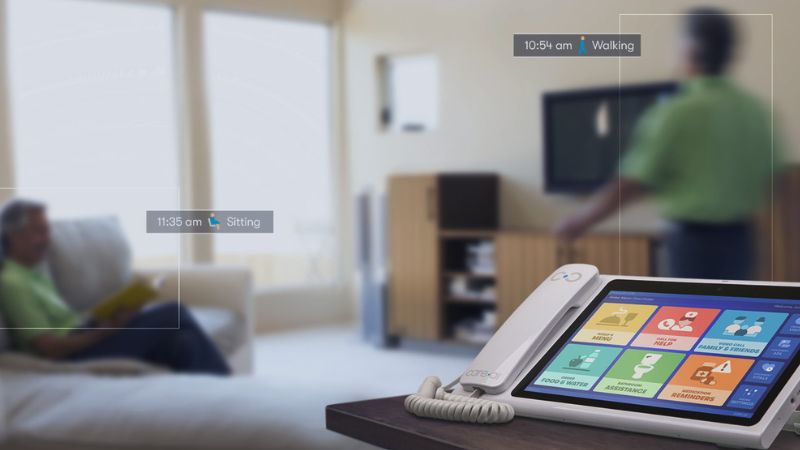
In today’s world, homecare is becoming a preferred option for many patients who need regular medical attention but wish to stay in the comfort of their own homes. A significant contributor to this shift is the advent of smart sensors, which have dramatically improved patient safety and care quality.
These tiny, intelligent devices are making big waves in the healthcare industry, providing peace of mind for patients and caregivers alike.
The Role of Smart Sensors in Homecare
Smart sensors are small devices equipped with the ability to detect and respond to changes in the environment or human body. In the context of home care, these sensors are used to monitor health indicators, detect emergencies, and even predict potential risks, thereby providing critical data to caregivers and medical professionals.
Types of Smart Sensors in Homecare:
- Health Monitoring Sensors: Track vital signs such as heart rate, blood pressure, and respiratory rate.
- Environmental Sensors: Detect changes in the room conditions, like smoke, carbon monoxide, or excessive heat.
- Motion Sensors: Monitor the patient’s movements around the home, alerting caregivers to falls or unusual activity.
Enhancing Patient Safety with Smart Sensors
Smart sensors offer numerous safety benefits for homecare patients, particularly those with limited mobility, chronic conditions, or those recovering from surgery. Here are a few ways these devices are making homes safer:
Fall Detection
One of the most critical features for elderly patients or those with mobility issues is fall detection. Smart sensors placed around the home can detect a fall immediately and notify caregivers or emergency services, ensuring quick response times and reducing the risk of serious injuries.
Health Monitoring
Continuous monitoring of vital signs can alert healthcare providers to changes that may indicate a medical issue or the deterioration of a chronic condition. This real-time data allows for prompt adjustments in treatment plans and can prevent hospital readmissions.
Environmental Safety
Sensors that detect smoke, carbon monoxide, or even unusual heat levels can provide early warnings about potential dangers, allowing for fast action to prevent accidents or health risks related to poor air quality or fire hazards.
Smart sensors are playing a pivotal role in enhancing the safety of homecare patients by providing critical health and environmental alerts. As technology continues to advance, the scope of these devices will expand, offering even more robust solutions for patient care at home.
Embracing these innovations not only improves safety but also enhances the quality of life for those in home care settings. By integrating smart sensors into homecare practices, we are stepping into a future where patient safety and well-being are significantly enhanced by technology.
Utilizing Blockchain for Enhanced Privacy in Homecare Settings

In the rapidly evolving world of home care, privacy and data security are paramount concerns. As we integrate more digital tools into healthcare management, protecting sensitive medical information becomes a critical challenge.
This is where blockchain technology comes into play, offering revolutionary solutions to safeguard patient privacy in homecare settings. By leveraging this robust technology, we can enhance security, transparency, and trust, making it a game-changer for the healthcare industry.
What is Blockchain?
Blockchain is a decentralized digital ledger that records transactions across multiple computers in such a way that the registered transactions cannot be altered retroactively. This technology is best known for its role in powering cryptocurrencies like Bitcoin, but its potential extends far beyond, especially into the realm of healthcare.
Key Features of Blockchain in Healthcare:
- Decentralization: Reduces the risk of data breaches and hacks by distributing data across a network of computers.
- Transparency: Ensures that all transactions are visible and traceable by all network participants, yet personal data remains private.
- Immutability: Once information is entered into the blockchain, it cannot be changed, ensuring data integrity.
Blockchain in Homecare Privacy
Utilizing blockchain technology in-home care can dramatically improve how we handle, store, and secure patient data. Here’s how blockchain can transform privacy in homecare:
Enhanced Data Security
With blockchain, patient data is broken up into encrypted blocks that are linked and secured using cryptography. This means that data can be shared between authorized individuals without the risk of tampering or unauthorized access, which is crucial for sensitive medical information.
Improved Data Sharing
Blockchain creates a secure environment for data sharing among doctors, nurses, and other caregivers. With patient consent, healthcare providers can access up-to-date medical records quickly and efficiently, facilitating better treatment and care coordination without compromising privacy.
Increased Patient Control
Blockchain technology empowers patients by giving them control over their medical data. Patients can decide who gets access to their information, ensuring that they have a say in their healthcare management.
Blockchain technology holds tremendous promise for enhancing privacy and security in homecare settings. Enabling more secure and efficient data sharing, not only protects sensitive information but also improves the quality of care that patients receive.
As we continue to face privacy challenges in healthcare, blockchain stands out as a powerful tool that could redefine norms and elevate patient care to new standards. Embracing this technology means moving towards a more secure, transparent, and patient-centered healthcare system—an invaluable step forward for everyone involved in home care.
How to Choose the Right Technology Tools for Your Homecare Needs

When it comes to home care, choosing the right technology tools can significantly enhance the quality of care and the comfort of both caregivers and patients. With the myriad of options available today—from wearable devices and smart home systems to telehealth services and mobile health apps—deciding what’s best for your specific needs can seem overwhelming.
Assessing Homecare Needs
The first step in choosing the right technology for home care is understanding the specific needs of the patient. Consider these key areas:
- Medical Conditions: What are the patient’s health issues? Different conditions may benefit from specific types of technology, such as heart rate monitors for cardiac patients or glucose monitors for diabetics.
- Mobility: Does the patient have mobility issues? Tools like fall detectors and emergency alert systems can be lifesaving.
- Caregiver Involvement: How much will caregivers be involved, and what kind of communication tools will they need to stay informed and responsive?
Types of Homecare Technology
Once you’ve assessed the needs, explore the types of technology available that can address these specific areas. Here’s a breakdown of some popular options:
Telehealth Services
Telehealth platforms allow patients to consult with healthcare providers via video conferencing, which can be incredibly beneficial for regular checkups and ongoing management of chronic conditions.
Benefits:
- Reduces the need for physical travel.
- Provides easy access to medical advice.
- Helps in maintaining regular contact with healthcare professionals.
Wearable Health Devices
Devices like smartwatches and fitness trackers that monitor vitals like heart rate, sleep patterns, and physical activity can help manage and prevent health issues.
Benefits:
- Monitors health metrics continuously.
- Alert caregivers and doctors about potential health issues.
- Encourages an active lifestyle.
Smart Home Gadgets
Innovations such as smart thermostats, lights, and voice-activated devices can make the home environment safer and more comfortable for the elderly or those with disabilities.
Benefits:
- Enhances safety through automated routines.
- Improves comfort and ease of living.
- Allows for remote monitoring by caregivers.
Mobile Health Apps
Health apps can track medication schedules, offer health tips, and even connect patients with their doctors.
Benefits:
- Provides medication reminders.
- Offers dietary and exercise guidance.
- Keeps a complete log of health records accessible both by patients and healthcare providers.
Evaluating Technology Solutions
When selecting technology tools for homecare, consider the following factors to ensure you make the best choice:
Ease of Use: Ensure the technology is user-friendly, especially for elderly patients who may not be tech-savvy.
Integration Capabilities: Check if the tool can easily integrate with other health systems and devices being used.
Support and Maintenance: Look for products that come with good customer support and easy maintenance.
Security and Privacy: Ensure that any digital tool protects user data and complies with health privacy laws like HIPAA (Health Insurance Portability and Accountability Act).
Implementing Your Technology Choices
After choosing the right tools, implementing them effectively is crucial. This might involve:
- Training for both the patient and caregivers on how to use the new tools.
- Regularly reviewing the technology’s effectiveness and making adjustments as needed.
- Staying updated with new advancements and updates for the tools you’ve chosen.
Selecting the right technology tools for home care is a crucial step toward enhancing the safety, comfort, and health of patients at home. By carefully assessing needs, exploring available options, and evaluating potential solutions, you can equip your homecare setting with the best technology to support your specific requirements.
The goal is to enhance quality of life, so choose tools that blend seamlessly into daily routines and provide substantial health benefits. Embrace these technologies, and transform homecare into a safer, more efficient, and comforting experience for everyone involved.
The Importance of Cybersecurity in Homecare Technologies
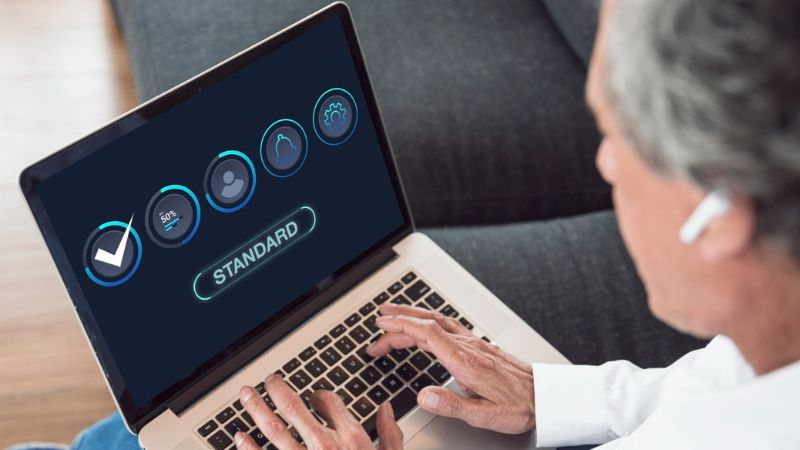
In the digital age, homecare technologies such as telehealth systems, wearable health monitors, and smart home devices are transforming how we manage health care at home. These innovations offer immense benefits, from improving patient outcomes to enhancing daily convenience.
However, as our reliance on these technologies grows, so does the risk of cybersecurity threats. Protecting sensitive health data against unauthorized access and breaches is not just a technical necessity but a critical component of patient care.
Understanding Cybersecurity in Homecare
Cybersecurity involves protecting internet-connected systems, including hardware, software, and data, from cyber attacks. In a homecare setting, this means ensuring that all medical devices and health data platforms are secure from threats that could compromise patient safety and privacy.
Key Risks Include:
- Data Breaches: Unauthorized access to sensitive data could expose personal health information.
- Malware Attacks: Malicious software can be installed to disrupt, damage, or gain unauthorized access to health systems.
- Ransomware: Hackers could seize control of homecare data systems, demanding payment to release control back to the user.
Why is Cybersecurity Critical in Homecare?
The integration of technology in healthcare settings makes patient data more accessible but also more vulnerable. Here are several reasons why cybersecurity is indispensable in homecare technologies:
Protection of Sensitive Data
Patient records contain confidential information like medical histories, treatment plans, and personal identifiers. A cybersecurity breach could lead to identity theft, fraud, and unauthorized disclosure of private medical information.
Ensuring Trust
Patients and providers must trust that health technologies are safe and reliable. Strong cybersecurity measures foster confidence in the use of homecare technologies, encouraging wider adoption and more effective health management.
Compliance with Regulations
Healthcare providers are obligated to comply with strict regulations regarding data protection, such as the Health Insurance Portability and Accountability Act (HIPAA) in the U.S., which sets national standards for the protection of health information.
Implementing Strong Cybersecurity Measures
To mitigate the risks associated with cyber threats in-home care, it is crucial to implement robust cybersecurity strategies. Here are effective measures to enhance the security of homecare technologies:
Regular Updates and Patches
Ensure that all homecare devices and software are regularly updated to protect against the latest threats. Software patches can fix vulnerabilities that might be exploited by hackers.
Secure Wireless Networks
Homecare devices often connect to the internet via home WiFi networks. It’s vital to secure these networks with strong encryption protocols, such as WPA2, and to change default passwords to something strong and unique.
Multifactor Authentication
Use multifactor authentication (MFA) for accessing homecare systems. This requires multiple forms of verification, drastically reducing the chance of unauthorized access.
Education and Training
Regularly educate patients and caregivers on the importance of cybersecurity practices. This includes recognizing phishing attacks, safely using health devices, and properly managing passwords.
As homecare technologies become increasingly embedded in our daily lives, the importance of cybersecurity cannot be overstated. By understanding the risks and implementing effective security measures, healthcare providers and patients can protect against cyber threats. This not only ensures the safety and privacy of sensitive data but also bolsters the integrity and trustworthiness of homecare technologies.
In embracing cybersecurity, we are not just protecting data; we are securing the health and well-being of individuals who depend on these critical technologies every day. Embrace these practices, and create a safer environment for everyone involved in the realm of homecare.
Cloud Computing in Homecare: Benefits and Challenges
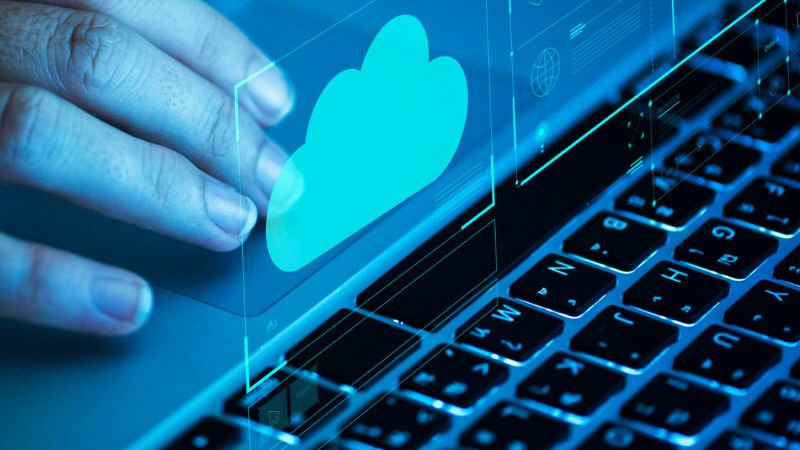
Cloud computing is transforming home care by providing flexible, scalable, and efficient solutions that enhance patient care and streamline operations. This technology allows data and applications to be accessed over the internet, enabling caregivers and healthcare providers to deliver better, more coordinated care. Despite its numerous advantages, cloud computing in-home care also faces significant challenges.
What is Cloud Computing?
Cloud computing is a technology that allows individuals and organizations to access and store data and applications over the Internet instead of on a local computer or server. This means that software, platforms, and infrastructure are provided as services that users can access and use through any internet-connected device.
These services are maintained and controlled by cloud service providers, offering scalable resources that can be adjusted according to demand. The key advantages of cloud computing include cost savings on IT infrastructure, enhanced collaboration, greater flexibility, and the ability to easily scale services up or down based on the user’s needs.
The Benefits of Cloud Computing in Homecare:
Improved Data Management
Cloud computing offers robust data storage solutions, making it easier to manage patient records and information. Healthcare providers can access and update medical records in real-time, ensuring they always have the latest information at their fingertips.
Enhanced Collaboration
Cloud-based tools facilitate better communication among caregivers, patients, and healthcare providers. This enhanced collaboration ensures that everyone involved in a patient’s care is on the same page, leading to more effective treatment and care coordination.
Cost Efficiency
By using cloud services, homecare providers can reduce costs associated with traditional IT systems, such as onsite data storage and maintenance. Cloud solutions offer pay-as-you-go models that scale with the needs of the healthcare provider, providing significant financial savings.
Accessibility
Cloud computing allows healthcare professionals and caregivers to access medical data and applications from anywhere, at any time, as long as they have internet access. This accessibility is crucial for providing timely and efficient care to patients who rely on homecare services.
The Challenges of Cloud Computing in Homecare:
Security Risks
One of the most significant concerns with cloud computing is data security. Patient information must be protected from unauthorized access and breaches. Homecare providers need to ensure that their cloud services comply with health regulations such as HIPAA (Health Insurance Portability and Accountability Act) in the U.S., which sets the standard for patient data security.
Internet Dependency
Cloud services require a stable and continuous internet connection. Any disruption in connectivity can hinder access to critical data and applications, potentially impacting patient care.
Complexity and Training
Implementing cloud computing solutions can be complex, requiring substantial training for all users. Healthcare providers need to ensure that staff are properly trained to use these technologies effectively and securely.
Vendor Lock-in
Relying on a single cloud service provider can lead to vendor lock-in, making it difficult for healthcare providers to switch services or integrate different technologies. This dependence can limit flexibility and control over data and services.
Cloud computing offers transformative benefits for home care by improving data management, enhancing collaborative care, reducing costs, and increasing accessibility. However, the challenges of security, internet dependency, system complexity, and potential vendor lock-in must be carefully managed.
By addressing these hurdles, homecare providers can fully leverage the benefits of cloud computing to improve patient care and operational efficiency. Embracing this technology means stepping into a future where homecare is more connected, efficient, and patient-focused than ever before.
Smart Alarms and Homecare: Reducing Emergency Response Times

In the realm of home care, ensuring quick response times in emergencies is crucial for safeguarding the health and safety of individuals, especially the elderly and those with chronic conditions. Smart alarms are emerging as a vital technology in this space, offering innovative solutions that drastically cut down emergency response times. These advanced systems are designed to detect potential dangers and alert caregivers and emergency services instantly, providing peace of mind and saving lives.
The Role of Smart Alarms in Homecare
Smart alarms are sophisticated devices equipped with sensors and connectivity that monitor various environmental and physiological parameters. These alarms are not only limited to detecting intrusions or fires but are also adept at recognizing medical emergencies, such as falls or critical changes in health status.
Types of Smart Alarms:
- Medical Alert Systems: Wearable devices that allow users to call for help at the push of a button.
- Fall Detection Sensors: Automatically detect falls and notify caregivers or emergency services without any user action required.
- Health Monitoring Alarms: Track vital signs like heart rate and blood pressure, and alert medical personnel if readings fall outside normal ranges.
Benefits of Smart Alarms in Homecare:
Faster Emergency Response
By instantly alerting caregivers and emergency responders, smart alarms significantly reduce the time it takes to provide aid. This rapid response can be critical in preventing severe complications or improving the outcomes of health emergencies.
Continuous Monitoring
Smart alarms provide 24/7 monitoring, ensuring that help is available at all times. This constant vigilance is particularly important for those who live alone or are at high risk of medical emergencies.
Increased Independence
These technologies allow individuals to live independently for longer, providing them and their families with a sense of security. Knowing that help is readily available at the touch of a button or automatically can boost confidence for both the users and their loved ones.
Peace of Mind for Caregivers
Smart alarms relieve some of the constant worry caregivers may feel about providing immediate help when they are not physically present. They know that the smart systems are always on guard.
Implementation Tips
To effectively integrate smart alarms into homecare, consider the following tips:
- Choose Reliable Technology: Opt for alarms with proven reliability and customer support.
- Ensure Ease of Use: The alarms should be easy for patients to use, with simple interfaces and clear instructions.
- Regular Testing and Maintenance: Routine checks are necessary to ensure the alarms function properly when needed.
Smart alarms are transforming home care by providing essential tools that enhance the safety and well-being of individuals at home. With their ability to reduce emergency response times and monitor health conditions continuously, these devices are not just technological innovations—they are lifelines for many.
As we continue to see advancements in this technology, the future of home care looks promising, with smart alarms at the forefront of creating safer, more responsive care environments. Embracing these tools can lead to a significant improvement in the quality of life for those needing home care and peace of mind for their families.
How 5G Will Transform Home Health Services

In today’s rapidly advancing world, 5G technology is poised to dramatically transform how medical care is administered, especially in the realm of home health services. This next-generation wireless technology offers the potential to significantly enhance the quality, efficiency, and accessibility of healthcare services from the comfort of one’s home. Let’s dive into the ways 5G will reshape home health services, making healthcare more effective and accessible for everyone.
Faster, More Reliable Connectivity
One of the most profound benefits of 5G is its ability to provide faster and more reliable internet connections. With speeds up to 100 times faster than 4G, 5G ensures that medical data can be transmitted in real-time without any delays. This is crucial for telemedicine, where doctors rely on swift data transfer to assess patients’ health remotely. High-definition video calls, which are essential for virtual consultations, will become smoother and more consistent, providing both patients and healthcare providers with a clearer understanding and better communication.
Enhanced Remote Monitoring
Remote patient monitoring (RPM) devices play a pivotal role in home healthcare by tracking vital signs such as heart rate, blood pressure, and glucose levels. With 5G, the data collected by these devices can be uploaded instantly and analyzed more quickly. This means healthcare providers can monitor patients’ conditions more effectively and intervene immediately if the data indicates a potential health issue. Quicker response times can be lifesaving, especially for patients managing chronic conditions or recovering from surgery.
RealTime Health Data Access
The real-time data access provided by 5G technology can revolutionize how health monitoring and emergency responses are handled. Health professionals can receive alerts instantly if a patient’s health deteriorates, enabling prompt medical decisions that could prevent complications or expedite emergency responses. This level of immediacy could be particularly transformative for elderly patients or those with conditions that require constant surveillance.
AI and Machine Learning Integration
With the robust support of 5G, artificial intelligence (AI) and machine learning can be more effectively integrated into home health services. AI algorithms require large amounts of data to predict outcomes, personalize treatment plans, and provide health insights. The speed and bandwidth of 5G improve the capabilities of AI tools used in diagnostic processes, treatment protocol planning, and management of chronic diseases. This could lead to highly personalized and timely medical care.
Expansion of Healthcare Access
5G can significantly widen the reach of healthcare services, especially for people living in rural or underserved areas. Faster and more reliable internet connections mean that remote areas will have better access to telehealth services, reducing the need for frequent travel to distant healthcare facilities. This is not only more convenient but also ensures that high-quality healthcare is more equitable across different populations.
The advent of 5G is set to transform home health services by enhancing connectivity, improving the efficiency of remote monitoring, facilitating real-time data access, integrating AI, and expanding access to healthcare. As we continue to move forward, the integration of 5G into home health services promises to make healthcare more responsive, personalized, and accessible for all. With these advancements, the future of home health care is not just about treating illness—it’s about optimizing health and wellness in real-time, powered by the latest in technology.
How Automated Scheduling Can Transform CDPAP Caregiving

In the world of healthcare, especially within the Consumer Directed Personal Assistance Program (CDPAP), ensuring timely and effective care is paramount. Automated scheduling systems are emerging as a transformative tool for caregivers, enhancing the way they manage their tasks and interact with patients. This article explores how these innovative systems can revolutionize CDPAP caregiving, making it more efficient and responsive.
Streamlining Daily Operations
Automated scheduling is more than just a digital calendar; it’s a comprehensive solution that organizes the caregiver’s day-to-day duties systematically. For CDPAP caregivers, who often juggle multiple patients with varying needs, this technology can simplify the complexity of their schedules. It ensures that medication administration, patient visits, and other critical care activities are timed perfectly, reducing overlaps or gaps in care. This organization is crucial in medical care, where timing can significantly influence health outcomes.
Enhancing Care Quality
Quality care in the CDPAP context means attending to patients’ needs promptly and effectively. Automated scheduling supports this goal by setting reminders for caregivers about key tasks such as medication times, doctor’s appointments, and physical therapy sessions. This meticulous attention to timing not only helps in adhering to medical advice but also in building a routine that patients can rely on, thereby improving their overall satisfaction and well-being.
Reducing Administrative Burdens
One of the biggest advantages of automated scheduling is its ability to lighten the administrative load on caregivers. With automated tools, the need for manual entry of appointments and tasks is eliminated. This reduction in clerical work allows caregivers to focus more on patient care rather than paperwork. Furthermore, these systems can also help in tracking patient progress and generating reports for healthcare providers, ensuring that all parties are up-to-date with the patient’s condition and care plan.
Minimizing Errors
In the healthcare field, an error in scheduling can lead to missed medications or delayed treatments, which can severely impact a patient’s health. Automated scheduling minimizes these risks by providing clear, concise, and error-free scheduling. Alerts and notifications ensure that nothing is overlooked, enhancing patient safety and the caregiver’s peace of mind.
Facilitating Better Communication
Effective communication between patients, caregivers, and healthcare professionals is critical in the CDPAP system. Automated scheduling platforms often come with integrated communication tools that allow for real-time updates and reminders to be sent to all involved parties. This ensures everyone is on the same page regarding the patient’s care schedule and any potential changes that might need to be made.
The integration of automated scheduling systems in CDPAP caregiving can significantly transform how care is delivered. These systems streamline processes, enhance care quality, reduce the potential for errors, and improve communication flows between all parties involved.
As healthcare continues to evolve with technological advancements, embracing tools like automated scheduling will be key in providing top-notch care in the homecare setting. For caregivers and patients alike, this can mean a more reliable, efficient, and supportive care experience, ultimately leading to better health outcomes and quality of life for patients.
How Video Conferencing Is Bridging the Gap in CDPAP Care

In today’s digital age, technology continues to revolutionize various aspects of our lives, including healthcare. One significant advancement is the use of video conferencing in the CDPAP. This tool is proving invaluable in bridging the physical distance between patients, caregivers, and healthcare professionals.
Overcoming Geographical Barriers
One of the primary benefits of video conferencing in CDPAP care is its ability to connect patients with caregivers and healthcare providers, regardless of location. This is particularly crucial for patients living in rural or underserved areas where access to quality healthcare can be a challenge. Through video calls, caregivers can perform check-ins, provide updates, and receive instructions from healthcare professionals without the need for travel, ensuring continuous and consistent care.
Enhancing Patient Monitoring
Regular monitoring is vital for maintaining the health of those under CDPAP care, especially those with chronic conditions or those recovering from surgery. Video conferencing facilitates real-time visual check-ups, allowing caregivers to assess the patient’s condition visually and report back to doctors or nurses instantly. This immediate feedback loop can be critical in preventing complications or in the swift management of medical issues that may arise.
Facilitating Timely Medical Consultations
Scheduling and attending traditional in-person medical appointments can be cumbersome and time-consuming for both patients and healthcare providers. Video conferencing offers a convenient alternative, enabling timely consultations and follow-ups. Patients can discuss their symptoms, receive medical advice, and even get prescriptions renewed through a video call, reducing the need for physical visits and thus minimizing the strain on both patients and healthcare systems.
Training and Support for Caregivers
CDPAP often involves caregivers who may not have formal medical training but who are essential in providing day-to-day care. Video conferencing serves as a crucial educational tool, through which caregivers can receive real-time training and ongoing support from medical professionals. This setup not only enhances the caregiver’s ability to provide appropriate care but also ensures they are confident in handling various healthcare tasks and emergencies.
Improving Mental Health and Emotional Well-being
The isolation associated with being housebound can significantly impact a patient’s mental health. Video conferencing helps alleviate this isolation by enabling more frequent and interactive communication with loved ones and healthcare providers. These virtual interactions can boost the patient’s morale and overall emotional well-being, which is an integral part of holistic care.
Video conferencing is more than just a technological convenience; it is a transformative tool in the realm of home healthcare, particularly within the CDPAP framework. By enabling more frequent and effective communication, facilitating timely medical care, and providing essential training and support, video conferencing is helping to bridge the gap in care delivery.
As we continue to embrace these digital tools, the future of CDPAP care looks promising, with improved outcomes for patients and more streamlined processes for caregivers and healthcare providers alike. This integration of technology in healthcare is a pivotal step toward a more connected, efficient, and patient-centric care model.
